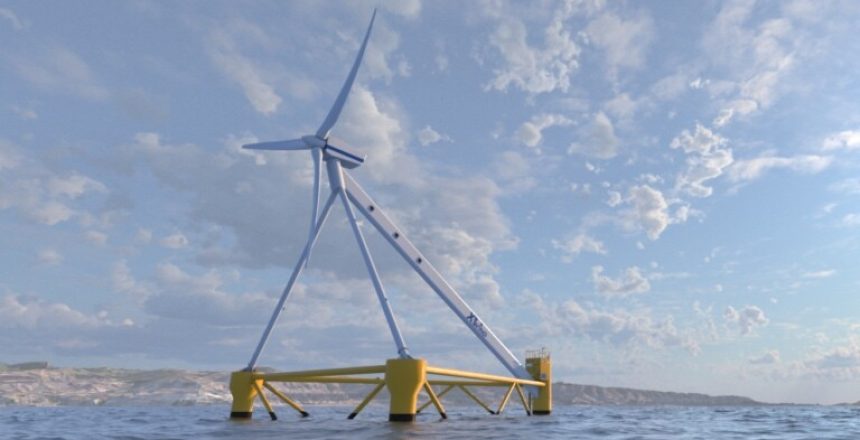The X1 Wind prototype has successfully produced its first kWh in the Canary Islands. The department in charge of its electrical development is located in Tafalla (Navarra), where the firm will soon open a work centre. This department, by the way, is headed by a local resident, Adrián Oliva. The Navarra-based companies SiG Coop, Jofemar Corporación and the Association for Industry in Navarra (AIN) have also collaborated in the initiative.
The company X1 Wind recently reported that the first floating wind turbine prototype to be developed in Spain has successfully produced its first kWh in the Canary Islands. This is an achievement in which Navarra-based companies and professionals from the renewable energy sector, one of the vectors included in the Sustainable Strategy for Smart Specialisation (S4) of Navarra, have played a key role.
Thus, the electrical development of this installation has been carried out by a department located in Tafalla. Precisely in this Navarra-based town, the Barcelona firm X1 Wind is planning to open a work centre in the near future, which will be headed by the engineer and resident of this town, Adrián Oliva.
The team in the region has been growing over time. That is why the firm is planning to open a work centre in this town in the near future. “I’m especially excited for everyone to know that we work from here. We are looking for premises, which will have a capacity for six workers. At the moment, we have five permanent employees, four of them from Navarra, and we will soon be incorporating an industrialisation professional”, concludes this 34-year-old engineer from Navarra.
In addition, the companies SiG Coop and Jofemar Corporación, together with the Navarra Industry Association (AIN), have also participated in the X30: “Jofemar, for example, rented us part of its warehouse, where we were able to carry out the tests. We took the cabin there to carry out the tests”.
At the same time, AIN collaborated in the drafting of the technical project and its approval. “In these cases, you have to draw up a report in which you justify why you have done everything and that you comply with the regulations”, Oliva explains. And SiG Coop was in charge of validating with a simulation model that the wind turbine’s ground connection worked correctly. After these tests, the real connection of the system with the Oceanic Platform of the Canary Islands (Plocan) materialised. “Thanks to the simulations, we were able to confirm that the tests were conclusive.
Source:




